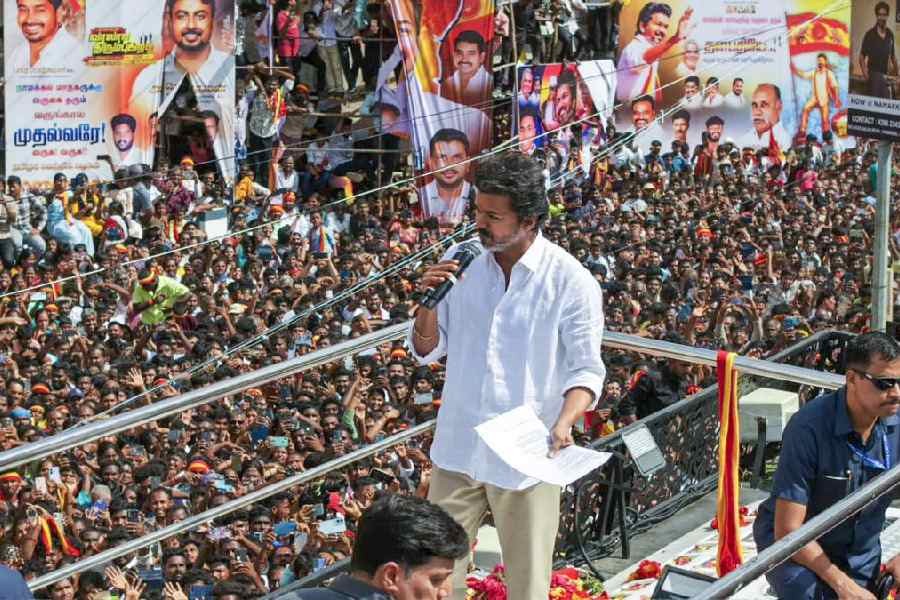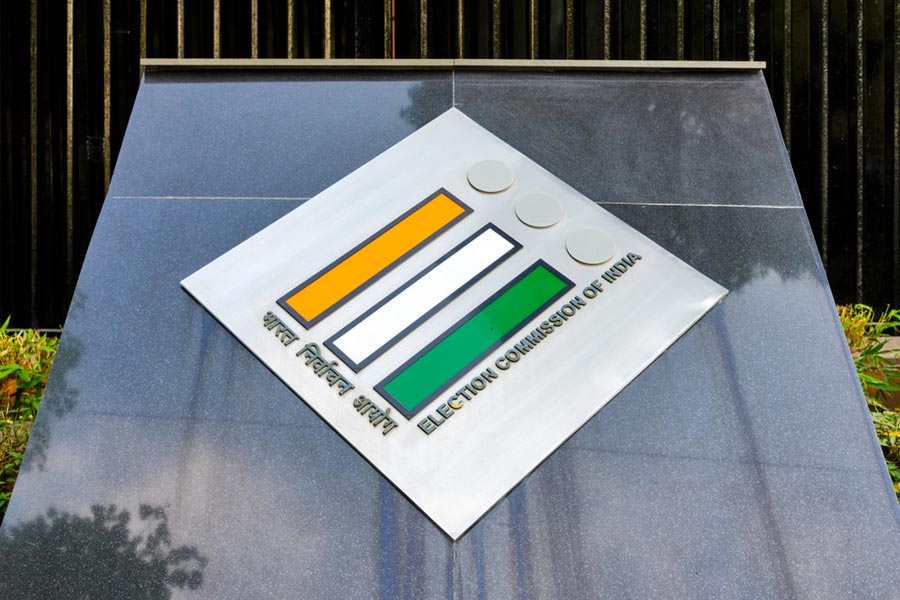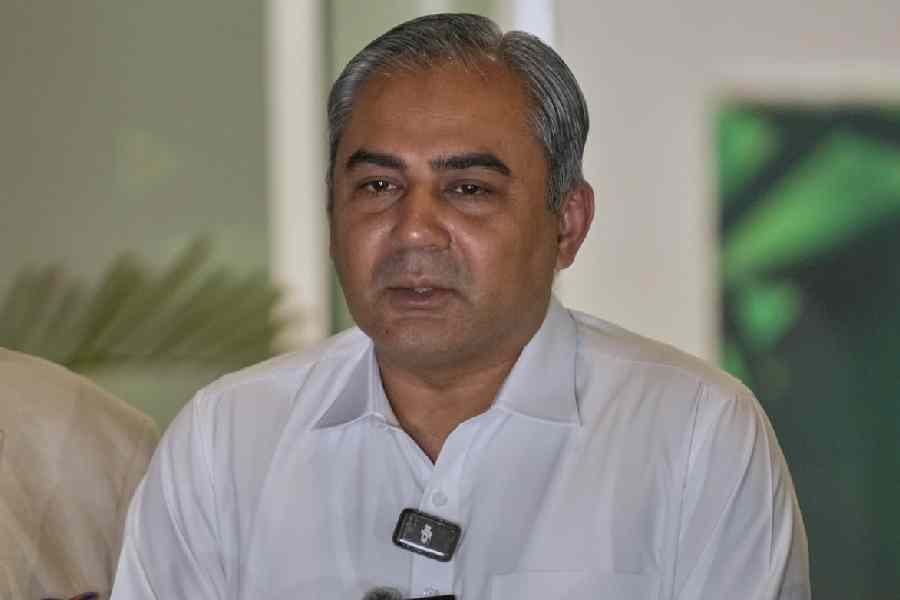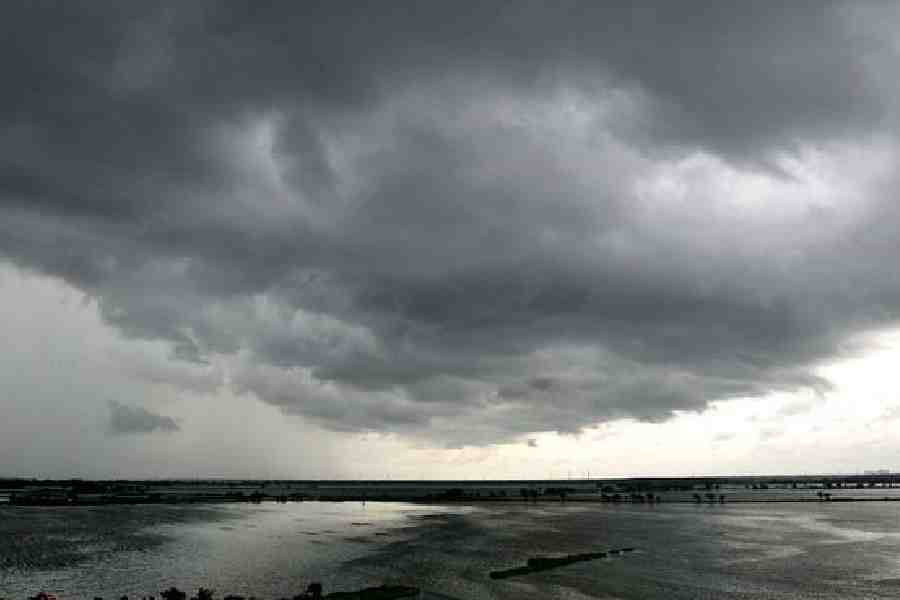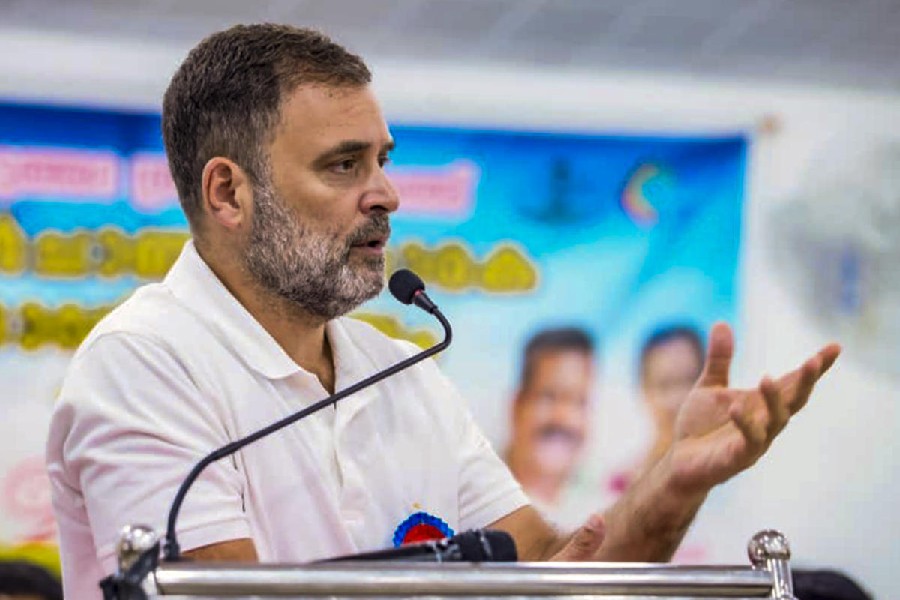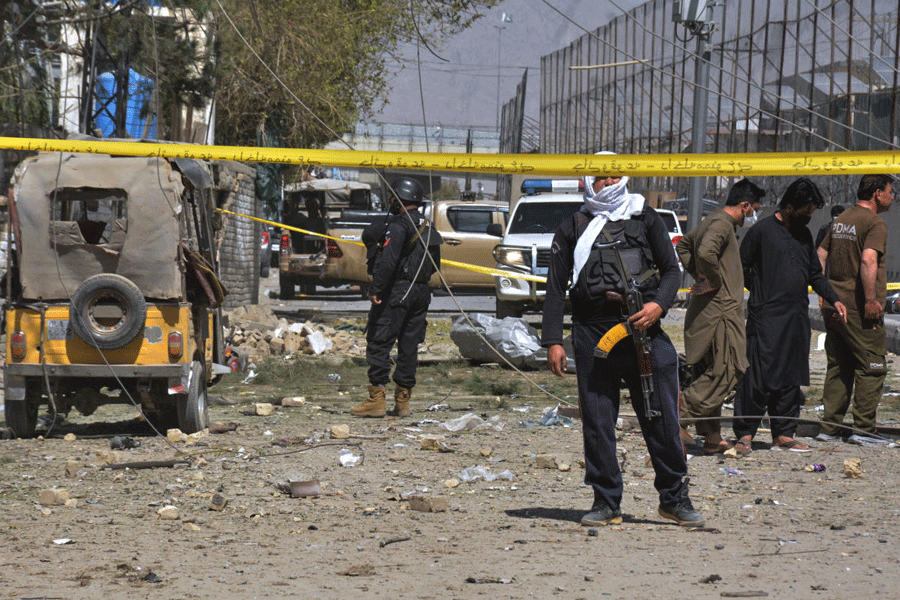

making Dashavatar cards (top); (above) a dangler with the Vamana avatar by Bansari and Mousumi Fouzda
The weather-beaten ochre English signage outside the single storey house in the temple town of Bishnupur reads thus - Dashavatar Cards. Ganjifa. Pride of Bengal. India & Abroad... We are reading unhurriedly from one side of the road. Blocking our view intermittently is a mini procession - women observing Jitashtami brata, a fast mothers undertake for the welfare of their children. Suddenly, out of nowhere, a young woman appears and asks, "Are you looking for Dashavatar taash?"
We begin to say we are not, not realising that the question is entirely rhetorical. She is saying: "Please come in. Our family makes these cards."
We follow the woman into a cramped living room. She says, "This place is Sankhari Bazaar, Mansatola, seat of the Fouzdars. We are the 15th generation making these cards."
Our guide is Mousumi Fouzdar, the granddaughter of the family.
Mousumi's father Bansari joins the conversation. The cards are named after the 10 incarnations of the Hindu god, Vishnu. The game used to be a favourite with the Malla kings who ruled the region - Bankura district - as early as 694 AD.
"The kings were patrons of art, craft, music and literature," says Chittaranjan Dasgupta, an archaeologist and historian. When King Veer Hambir, the 49th ruler of the Malla dynasty, converted to Vaishnavism, he renamed the place Bishnupur.
It is believed that the introduction of the peaceful Vaishnav way of life had something to do with enjoying non-violent leisure activities and this might have also given birth to the game of cards. The basics of the game, however, was possibly imported from any one or more of these places - Rajasthan, Odisha, Madhya Pradesh, Andhra Pradesh, Karnataka, Maharashtra or contemporary Bengal.
The game was later popularised by the Mughal emperors in the 16th century AD. A detailed description of an eight-suited pack of Mughal ganjifa or a card game with 96 cards can be found in Abul Fazal's Ain-i-Akbari. Suit is one of the categories into which the cards of a deck are divided. It is indicated by the colour of the card. The rank of the card is indicated by the number of pips or symbols on it.
"But Dashavatar taash of Bankura developed its own distinct form and rules for playing," says Dasgupta. And that's something the Fouzdars too don't seem very eager to reveal - instead distracting us with details about how their family came to make them.
Doesn't the family name connote that they were employed in the king's army? It does.
Says Bansari, "Originally from Kotulpur in Bankura, our forefathers were also artisans and they worked for the temples, where they built idols. Even now we create and repair the idol of theMrinmoyee temple and paint three patachitras [a folk art form] for it every year."
Bansari starts to talk about his father, Sudhir. He was a great artist. Specimens of his craft continue to be on display in craft museums across the world, including London's Victoria & Albert Museum.
Making of a set of these circular cards is not an easy job, Mousumi steers the conversation from the art to the craft of it all. Artisans make these cards with cloth - cotton, starch, paint and lacquer. First, a piece of cloth is folded over and pasted using glue made from tamarind seeds. After it has dried, a layer of chalk dust is applied. Both sides are evened out with a smooth stone. The cards are then cut into round shapes of two-and-a-half-inch radius. Various deities and their symbols are then painted on them. "It takes a day to make a single card; it is entirely hand-crafted," she says.
The Fouzdars have had to reinvent the cards to ensure the tradition continues. Dashavatar danglers, supposedly for good luck. Dashavatar scrolls. Dashavatar patachitra. Bansari's younger brother, Bidyut, has also decorated Durga Puja pandals with Dashavatar motifs. In 2016, he painted these quaint designs on paper lanterns, about a thousand of them.
Basically, reincarnate - that's the hand to play.
Check Mates
Facts about Dashavatar cards
Traditionally played by five players
A pack is made up of 120 cards — 10 suits of 12 cards each
Each suit corresponds to an avatar of Vishnu
The suits in order of ascending importance with the corresponding symbol — Matsya (fish), Kurma (turtle), Varaha (boar), Nrusinha (lion or half-man, half-lion), Vamana (dwarf mendicant Brahmin), Parashurama (axe), Ram (bow and arrow), Krishna (Sudarshan chakra), Buddha (conch shells) and Kalki (swords).


